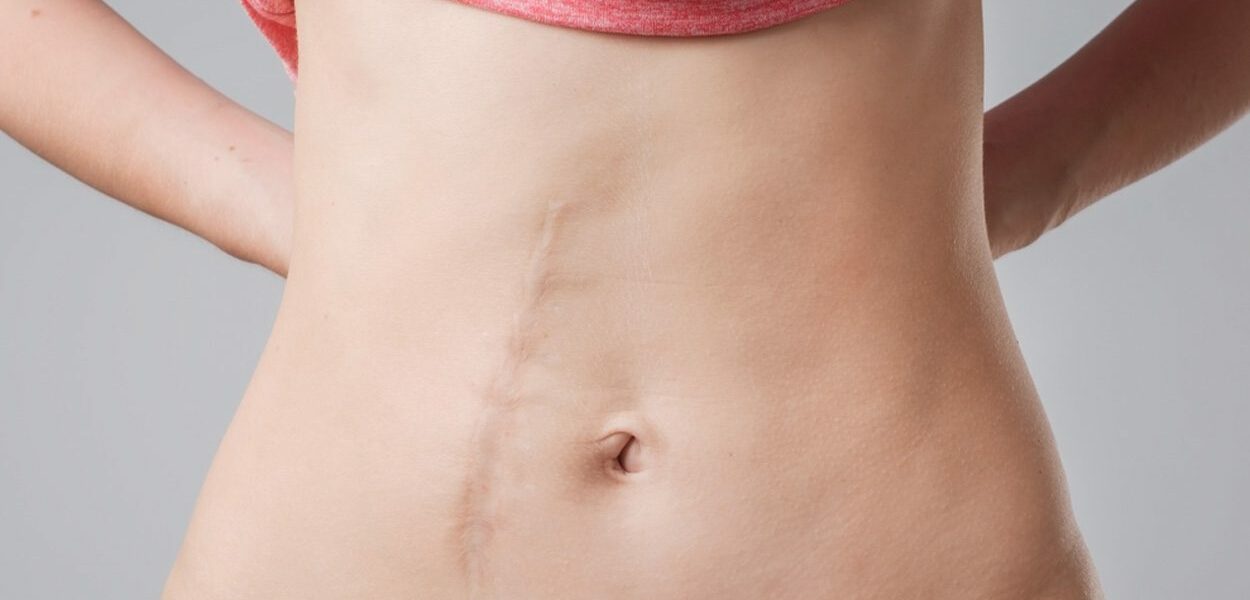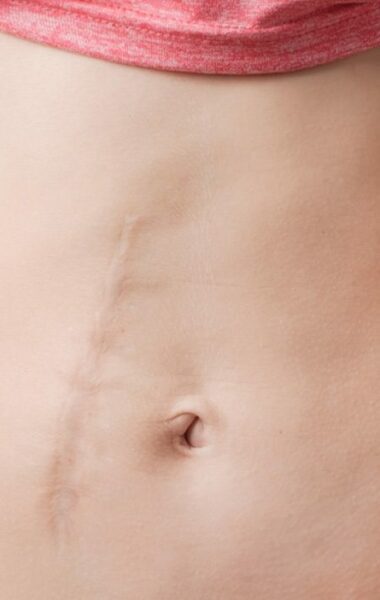Do you have a scar on your face or abdomen (or another part of your body) that you want to get rid of? There are several ways to do this:
1. Scar correction by means of an operation

A plastic surgeon can correct scarring under local anaesthetic – sometimes under general anaesthetic, for large scars. It is sometimes necessary to carry out several operations for successful correction.
The surgeon excises the scar. It is sometimes necessary to transplant a bit of skin to close the wound.
Scars are seldom surgically corrected. It can be that the patient scars very easily. Surgery – in effect, the creation of a new wound – then makes little sense. The chance is very high that the scar will end up being even larger – as the wound has become larger. Surgery is mostly the last resort, when all other solutions have been exhausted. Or when there is a pressing reason, such as restriction of movement by a scar on a joint.
The disadvantage of surgery is that the healing process has to be repeated, from the start, and complications may arise. For example, secondary bleeding or infection. If you have post-operative increased pain, swelling, redness or fever you must immediately contact your hospital.
Other complications are opening of the wound, pain, damage to tissue around the operation site.
And note: in many cases surgical scar correction does not make sense. It will cause little, visible improvement after a major abdominal operation, for example. Make sure you are properly informed and make a careful assessment!
2. Scar correction by means of injections
A kenacort injection can be used for hypertrophic and keloid scars. Kenacort is anti-inflammatory, allowing the scar to mature in a few weeks and partially ‘melt’. After 4 weeks the substance is used up and the injection must, if necessary, be repeated.
The disadvantage of an injection: ‘melting’ a scar is not a controlled process. As a result, neighbouring skin can also be thinned out. Moreover, the scar that remains after the treatment looks like shrivelled tissue.
The result is therefore not ideal from an aesthetic point of view. These injections are often used before surgical correction.
3. Scar correction using silicone plasters
A silicone plaster (or gel) can considerably reduce the size of a hypertrophic scar. The advantage of silicone plasters is that they can be worn throughout the day and can be used for several weeks, perhaps months.
The advantage of silicone gel is that its fluid state enables it to mould itself well to the irregularities of the scar. Moreover, the gel dries in 5 minutes, after which it can be covered with make-up or clothing.
Another advantage is that silicone therapy is much less invasive than an operation or injection. The result depends on the seriousness of the scar.
In addition to ALHYDRAN scar cream (see below) we also offer medical silicone therapy under the BAPSCARCARE brand.
4. Scar correction using scar cream
A good scar cream is an excellent alternative to an operation or injections for the correction of existing scars. It is much less invasive than undergoing surgery (again) and the results, in many cases, are spectacular.
Many people who have used a scar cream on existing scars, old and new, for example after a burn wound or operation, report very positive experiences.
Scar creams are frequently used preventively, in combination with another correction method such as surgery or injection.

